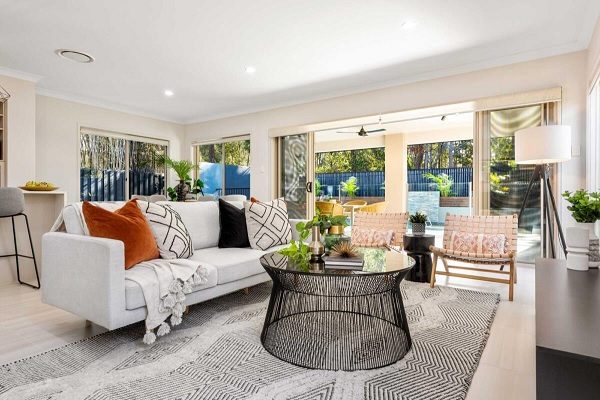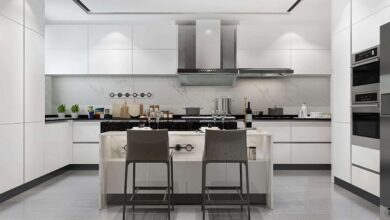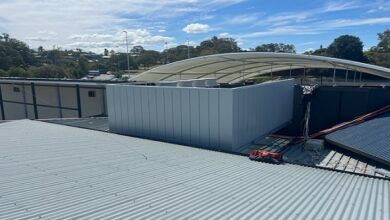
How Property Styling Works
Step into the world of property styling and witness the transformative magic it can bring to any space. Whether you’re preparing a home for sale or looking to refresh your own living environment, property styling is the secret ingredient that elevates the aesthetic appeal and maximizes the potential of a property.
Using a combination of strategic interior design principles and expert knowledge of current market trends, property stylists work their magic to create visually stunning, yet functional spaces. They aim to create an emotional connection with potential buyers or tenants, making them instantly fall in love with the property.
With a keen eye for detail, property stylists select the perfect furniture, accessories, and color schemes to create a cohesive and inviting atmosphere. They know how to highlight the best features of a property and downplay its flaws, creating a sense of aspiration and desirability.
Ultimately, property styling is an investment that can significantly increase the perceived value of a property, leading to faster sales and higher returns. So, if you want to make the most out of your property and leave a lasting impression, it’s time to explore the world of property styling.
The Importance of Property Styling
When it comes to selling a property, Refresh Property Styling Brisbane knows that first impressions matter. Potential buyers or tenants make quick judgments based on the initial look and feel of a home. This is where property styling plays a crucial role. By creating an inviting and visually appealing space, property stylists help buyers or tenants envision themselves living in the property.
A well-styled property can evoke positive emotions, such as a sense of comfort, luxury, or tranquility. These emotions can significantly influence decision-making and increase the chances of a successful sale or rental. In a competitive real estate market, property styling sets a property apart from the rest, making it more memorable and desirable.
Property styling is not limited to just selling a property. It can also benefit homeowners who want to create a beautiful and functional living environment. By incorporating the latest design trends and utilizing space effectively, property stylists can transform any space into a sanctuary that reflects the homeowner’s personality and lifestyle.
How Property Styling Works
Property styling is a meticulous process that involves careful planning, design expertise, and attention to detail. It starts with a thorough assessment of the property, considering its size, layout, architectural features, and target market. The property stylist then develops a tailored styling plan, keeping in mind the desired outcome and budget constraints.
One of the key aspects of property styling is furniture selection. Property stylists choose furniture pieces that complement the style of the property and create a harmonious flow throughout the space. They consider factors such as scale, proportion, and functionality to ensure that the furniture enhances the property’s overall appeal.
In addition to furniture, property stylists also focus on accessories and decor elements. These include items such as artwork, rugs, lighting fixtures, cushions, and curtains. The goal is to create a cohesive, inviting atmosphere that appeals to the target market. Property stylists carefully curate these accessories, paying attention to color schemes, textures, and patterns.
Once the styling plan is finalized, the property stylist takes care of the logistics, including sourcing, delivery, and installation of the furniture and accessories. They work closely with a trusted network of suppliers and tradespeople to ensure a seamless process. The property stylist oversees every aspect of the styling project, ensuring that the final result meets their high standards.
The Role of a Property Stylist
A property stylist is a skilled professional who combines their interior design knowledge with a deep understanding of the real estate market. They have a keen eye for aesthetics and a knack for creating spaces that appeal to a wide range of buyers or tenants.
The role of a property stylist goes beyond just selecting furniture and accessories. They are experts in creating a lifestyle narrative that resonates with potential buyers or tenants. They understand the psychology of space and know how to create an emotional connection through clever design choices.
Property stylists also have a strong network of suppliers and tradespeople, enabling them to source high-quality furniture and accessories at competitive prices. They have access to a wide range of styles and options, ensuring that each property is styled to perfection.
Throughout the styling process, property stylists work closely with real estate agents, homeowners, or developers to understand their goals and preferences. They provide valuable insights and advice, helping clients make informed decisions about the styling choices. The property stylist acts as a trusted partner, guiding clients through the entire process and ensuring their satisfaction.
The Process of Property Styling
Property styling is a multi-step process that requires careful planning and execution. The following are the critical stages involved in property styling:
- Initial Consultation: The property stylist meets with the client to discuss their goals, budget, and timeline. They assess the property and provide recommendations on how to enhance its appeal.
- Styling Plan: The property stylist develops a detailed styling plan based on the client’s requirements. This includes furniture and accessory selection, color schemes, and layout recommendations.
- Sourcing and Logistics: The property stylist sources the furniture and accessories from their network of suppliers. They take care of the delivery, installation, and removal of furniture, ensuring a hassle-free experience for the client.
- Styling and Staging: Once all the elements are in place, the property stylist works their magic to transform the property. They arrange furniture, hang artwork, style shelves, and add finishing touches to create a beautiful and inviting space.
- Photography and Marketing: After the property is styled, professional photography is essential to capture its best features. The property stylist works closely with photographers to ensure the images showcase the property in its best light. These images are then used for marketing purposes, attracting potential buyers or tenants.
- Maintenance and Removal: The property stylist monitors the condition of the styled property and ensures that it remains in pristine condition throughout the sales or rental period. Once the property is sold or rented, the property stylist coordinates the removal of the furniture and accessories.
The property styling process is designed to be efficient and effective, with the ultimate goal of achieving a successful sale or rental.
Tips for Effective Property Styling
If you’re considering property styling, here are some tips to help you achieve the best results:
- Declutter and Depersonalize: Before styling your property, declutter and remove personal items. This allows potential buyers or tenants to envision themselves in the space.
- Neutral Color Palette: Opt for a neutral color palette when selecting furniture and accessories. Neutral tones create a sense of sophistication and allow buyers or tenants to visualize their own style in the space.
- Focus on Key Areas: Prioritize styling areas such as the living room, kitchen, and master bedroom. These areas have the most impact on potential buyers or tenants.
- Pay Attention to Lighting: Good lighting can enhance the overall ambiance of a property. Make sure to maximize natural light and incorporate well-placed artificial lighting.
- Accessorize Thoughtfully: Use accessories strategically to add visual interest and create a sense of warmth. Avoid cluttering the space with too many accessories.
- Consider the Target Market: Tailor the styling choices to the target market. For example, creating a child-friendly and functional environment if you’re selling a family home.
- Stay Current with Design Trends: Keep updated with the latest design trends to ensure your property styling is relevant and appealing to buyers or tenants.
By following these tips, you can create a beautifully styled property that stands out from the competition and captures the attention of potential buyers or tenants.
The Impact of Property Styling on Selling a Property
Property styling has a significant impact on the saleability of a property. It can help create a lasting impression and generate a sense of urgency among potential buyers. Here are some ways property styling can impact the selling process:
- Increased Perceived Value: A well-styled property appears more valuable in the eyes of potential buyers. By creating a visually appealing and well-designed space, property styling can justify a higher asking price.
- Faster Sales: Properties that are professionally styled tend to sell faster than those that are not. The emotional connection created by property styling can lead to quicker decision-making and a more efficient sales process.
- Higher Sales Price: Property styling can lead to higher sales prices, as buyers are willing to pay a premium for a beautifully presented property. The investment in property styling can result in a significant return on investment.
- Wider Market Appeal: Property styling helps attract a wider range of potential buyers. By creating a space that appeals to different tastes and lifestyles, property stylists can broaden the market reach and attract more interested buyers.
- Professional Image: A professionally styled property reflects positively on the seller or real estate agent. It demonstrates attention to detail, quality, and care, which can instill confidence in potential buyers.
Property styling is a powerful tool that can make a substantial difference in selling. By investing in property styling, sellers can maximize their chances of a successful sale and achieve the best possible outcome.
Property Styling vs. Home Staging
Property styling and home staging are often used interchangeably, but they have distinct differences. While both aim to enhance the appeal of a property, there are some essential variations between the two.
Property styling focuses on creating a lifestyle narrative and designing a space that appeals to a broad range of potential buyers or tenants. It involves selecting furniture and accessories that reflect current design trends and creating a cohesive and visually stunning environment. Property styling is often used for vacant properties or properties that need a complete transformation.
On the other hand, home staging is more about neutralizing and depersonalizing a property to appeal to a wide range of buyers. It involves rearranging existing furniture, decluttering, and making minor cosmetic improvements. Home staging is commonly used for occupied properties, where the homeowner still resides in the property during the selling process.
Property styling and home staging have their merits, and the choice between them depends on the property’s specific needs and circumstances. In some cases, a combination of both approaches may be used to achieve the best possible result.
DIY Property Styling vs. Hiring a Professional
When it comes to property styling, there is often a debate between doing it yourself (DIY) and hiring a professional. While there are advantages to both approaches, it’s essential to consider the complexity of the task and the desired outcome.
DIY property styling can be cost-effective, especially for homeowners on a tight budget. It allows you to personalize the space according to your taste and gives you full control over the styling choices. However, it can be time-consuming and requires a good understanding of design principles and market trends.
Hiring a professional property stylist offers several benefits. They bring a wealth of knowledge and expertise to the table, ensuring that the property is styled to its full potential. Professional property stylists have access to a wide range of furniture and accessories, allowing them to create a truly stunning and cohesive space. They also have the experience and resources to handle the logistics of sourcing, delivery, and installation.
Ultimately, the decision between DIY property styling and hiring a professional depends on your budget, time constraints, and level of expertise. Hiring a property stylist is the way to go if you’re looking for a hassle-free and professional result.
Conclusion
Property styling is a powerful tool that can transform any space into a visually stunning and emotionally captivating environment. Whether you’re selling a property or looking to refresh your living space, property styling can elevate the aesthetic appeal and maximize the potential of a property.
By understanding the importance of property styling, the process involved, and its impact on selling a property, you can make informed decisions and achieve the best possible outcome. Whether you choose to DIY or hire a professional property stylist, the key is to create a space that resonates with potential buyers or tenants and leaves a lasting impression.
So, if you want to make the most out of your property and create a space that stands out from the competition, it’s time to explore the world of property styling. With the right styling choices and a touch of magic, you can create a space that captures hearts and sells properties.



